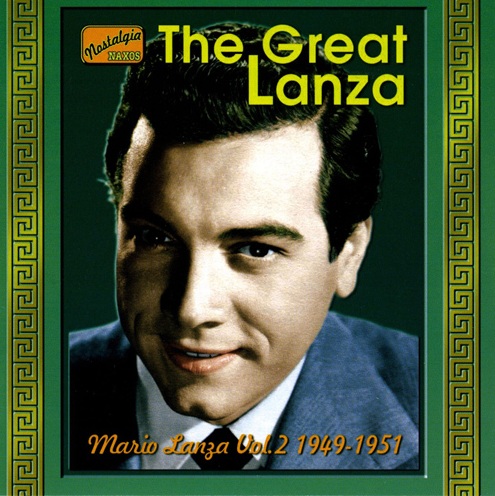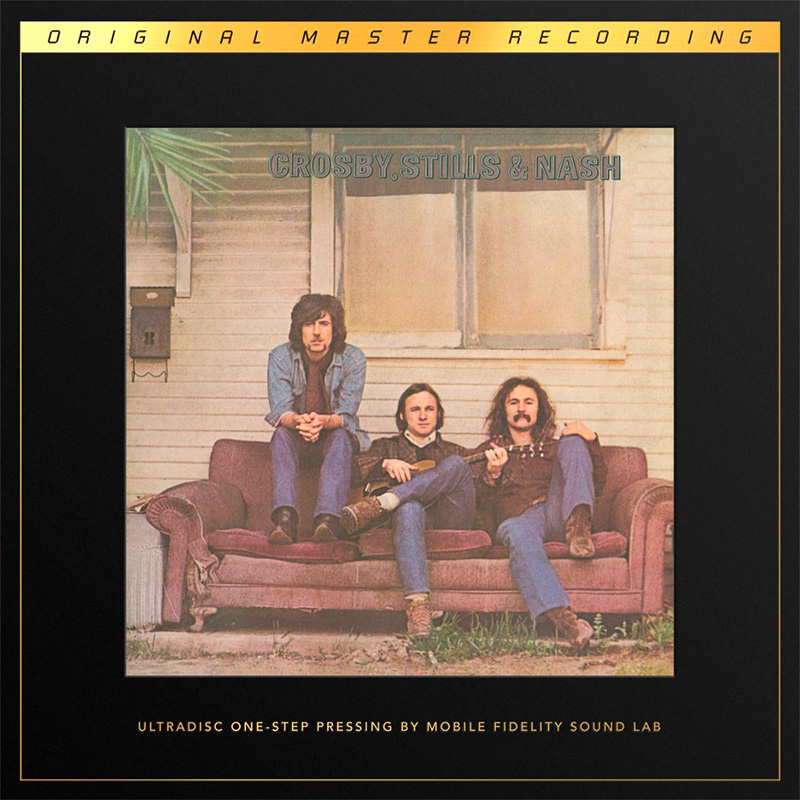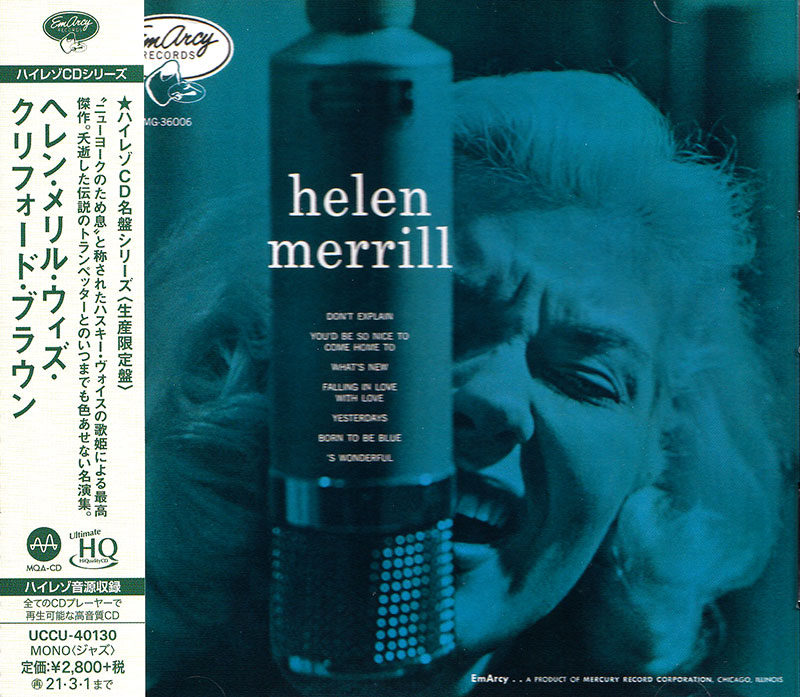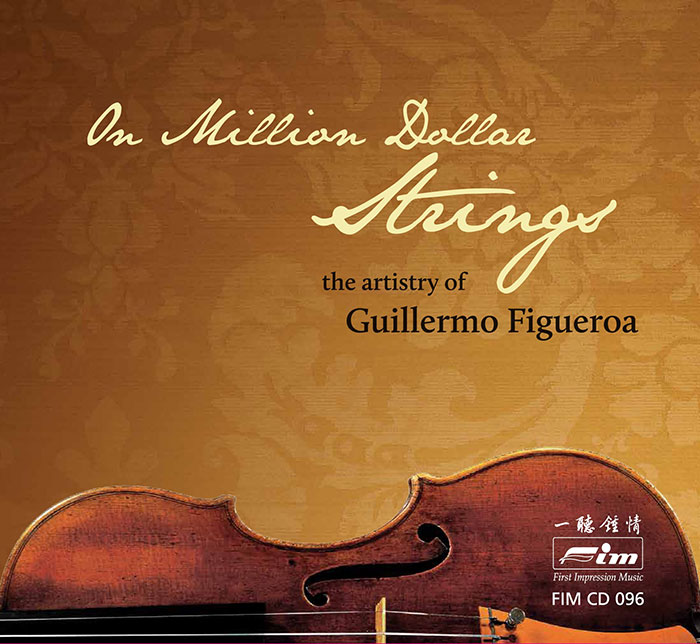Logowanie
OSTATNIE EGZEMPLARZE
Jakość LABORATORYJNA!
ORFF, Gundula Janowitz, Gerhard Stolze, Dietrich-Fischer Dieskau, Deutsche Oper Berlin, Eugen Jochum
Carmina Burana
ESOTERIC - NUMER JEDEN W ŚWIECIE AUDIOFILII I MELOMANÓW - SACD HYBR
Winylowy niezbędnik
ClearAudio
Essence MC
kumulacja zoptymalizowana: najlepsze z najważniejszych i najważniejsze z najlepszych cech przetworników Clearaudio
Direct-To-Disc
PIAZZOLLA, ChamberJam Europe
Tangos del Ángel y del Diablo
Direct-to-Disc ( D2D ) - Numbered Limited Edition
Mario Lanza
The Great Lanza Vol.2 1949-1951

- Mario Lanza - tenor
"The ‘modern’ tenor voice can be traced back to Enrico Caruso, or more accurately to many Caruso recordings that sold in millions worldwide, simultaneously raising the status of the gramophone and creating the mythical cult of the tenor as a sort of demigod which persists to this day. Not that Caruso’s voice was that easily imitated (a one-off, darkly dramatic and of baritonal and pharyngeal quality it broke the mould of his predecessors) and comparisons with this illustrious Neapolitan were usually wishful thinking, albeit they provided good box-office copy and, in the case of Mario Lanza, a convenient banner upon which to hoist a new name. However, in addition to an outstandingly beautiful lyric voice (and in his best years an often impressively vital delivery), Lanza did display an instinctive flair for phrasing, exceptional lung capacity, remarkable breath-control and, by and large, tasteful delivery. Additionally (some might say sadly) Mario was born with a certain charismatic Mediterranean fire ready-made for exploitation by the marketing mechanisms of Hollywood — although even in this department he set no real precedent, for in 1950 James Melton and Nino Martini, not to mention Kiepura and Beniamino Gigli, were still remembered with affection by film-goers. The ‘meteoric…muscular’ Mario Lanza, whom Toscanini, perhaps over-exuberantly, once dubbed ‘the greatest voice of the twentieth century’, was born Alfred Arnoldo Cocozza into an immigrant Italian family in Philadelphia on 31 January 1921. Resident in America from the age of sixteen his father Antonio was a disabled World War I veteran while his seamstress mother, Maria Lanza was, fortuitously for Mario, a frustrated soprano. Nurtured on records of Caruso, Gigli and other great tenors the young Mario shared his family’s broad musical tastes while his own, not inconsiderable talent for singing was actively encouraged. At school distinctly non-academic and inclined more to sport than to study (he dropped out of high school to work in his grandfather’s wholesale grocery business), he remained nonetheless an avid student of singing in his spare time, even while working subsequently as a piano remover. During his late teens he trained for about eighteen months with the baritone Antonio Scarduzzo and was coached by the Phildelphia-born soprano Irene Williams (1887-1979) who had connections in society circles. In 1942, Mario auditioned for Sergei Koussevitsky during a Boston Symphony Orchestra tour of Philadelphia — a lucky encounter which provided the youthful tenor with a scholarship to study at the New England Conservatory in Boston and, later, his stage debut (as Fenton in Nicolai’s Merry wives Of Windsor) at the Berkshire Summer Festival at Tanglewood, the Boston Orchestra’s summer headquarters. Signed for a concert tour by Columbia, Mario’s career was temporarily interrupted by two years’ war service in the United States Air Force. Based at Marfa, Texas, after auditioning successfully for Peter Lind Hayes, however, Mario was in demand at forces’ shows and, after touring military bases in Frank Loesser’s On The Beam, following demobilisation in 1945 he joined the chorus-line of the Broadway musical Winged Victory — a fund-raising flag-waver scored by David Rose and devised by Moss Hart, presented by an all military cast of US Army-Air Force personnel. In mid-1945, through the good offices of his baritone friend Robert Weede, Mario stood in for tenor Jan Peerce on ABC’s ‘Celanese Hour’ and between October and February 1946 appeared in six ‘Great Moments In Music’ concerts in New York. During 1946 he toured Canada in concert with soprano Agnes Davis and embarked on further vocal training with Enrico Rosati (Gigli’s noted voice teacher), through whose influence he was invited to sing in the Verdi Requiem with the NBC Symphony Orchestra, under Toscanini, an opportunity he forewent owing to lack of self-confidence. By 1947, however, that confidence and Lanza’s reputation were steadily growing and in July, in company with soprano Frances Yeend (b. 1918) and bass-baritone George London (1919-1985), he formed the Bel Canto Trio, which during the next year gave 84 concerts in the USA, Canada, Newfoundland and Mexico. On 28 August 1947 the end of their U.S. tour was marked with a gala at the Hollywood Bowl, with symphony orchestra under Eugene Ormandy. At this concert Lanza was heard by Louis B. Mayer who, before long, would be signing the tenor to a seven-year MGM contract. Meanwhile, however, two less-than-convincing appearances in opera (as Pinkerton in Madama Butterfly during the 1948 New Orleans Opera season) helped to convince Lanza that a greater future awaited him in the less gruelling spheres of concert, radio and screen. His MGM contract consolidated that conviction with unexpected financial security: $750 per week for the six months spent preparing his first movie, plus a $10,000 bonus, $15,000 on completion of the film itself and freedom meanwhile to give concerts, radio appearances and make recordings (under a prestigious, exclusive contract with RCA-Victor). Produced by Joseph Pasternak, that first film — a 98-minute musical called That Midnight Kiss (in which an unknown singer predictably becomes an international singing star) was released in 1949, pairing Mario for the first time with the comely, North Carolina-born soprano Kathryn Grayson (b.1922). Lanza’s second movie, The Toast Of New Orleans (Pasternak, 1950), again quasi-autobiographical insofar as it cast Lanza as a Bayou bumpkin who rises to stardom of the New Orleans Opera, netted him a fee of $25,000. Its score also brought the added cachet of an Academy Award-winning song, "Be My Love", by Sammy Cahn (1913-1993) and Nicholas Brodszky (1905-1958), which became a 1950 US charts No.1 (featured in Mario Lanza Vol.1, Naxos Nostalgia 8.120547). By 1951 it was also his first million-selling disc, eventually selling in excess of two million copies world-wide, making Mario a household name and recording superstar. During 1951, Lanza began weekly broadcasts of ‘The Mario Lanza Show’ (for CBS, sponsored by Coca Cola) and made his third film-musical, The Great Caruso: rated by most critics his best effort, it was certainly the most commercially successful and remains to this day highest in the affection of Lanza’s many fans. Its release was followed by a coast-to-coast ‘Caruso Concert Tour’ during which ‘Lanza fever’ swept the USA, while the LP of its soundtrack sold over a million copies worldwide, thus becoming the first ‘operatic’ long-player to attain Gold Disc status. Peter Dempsey, 2003"

























